Request Demo
Last update 13 Sep 2025
Tazobactam Sodium
Last update 13 Sep 2025
Overview
Basic Info
Drug Type Small molecule drug |
Synonyms Tazobactam, Tazobactam sodium (JAN/USAN), 他唑巴坦 + [2] |
Target |
Action inhibitors |
Mechanism β-lactamase inhibitors(Beta Lactamase inhibitors) |
Therapeutic Areas |
Active Indication |
Inactive Indication- |
Originator Organization |
Active Organization |
Inactive Organization- |
License Organization- |
Drug Highest PhaseApproved |
First Approval Date- |
Regulation- |
Login to view timeline
Structure/Sequence
Molecular FormulaC10H12N4NaO5S |
InChIKeyZUNWFYFXHGWFRA-QVUDESDKSA-N |
CAS Registry89785-84-2 |
Related
26
Clinical Trials associated with Tazobactam SodiumChiCTR2500101528
Impact of Perioperative Prophylactic Piperacillin-Tazobactam on Postoperative Infectious Complications in High-Risk Patients Undergoing Pancreaticoduodenectomy
Start Date01 May 2025 |
Sponsor / Collaborator- |
NCT06123169
Postoperative Anti-infective Strategy Following Pancreaticoduodenectomy in Patients With Preoperative Biliary Stent
The main objective of the study is to compare 2 broad-spectrum antibiotic (Piperacillin / Tazobactam) treatment modalities, following pancreaticoduodenectomy in patients with preoperative biliary stent, to demonstrate the superiority of a 5-day post-operative antibiotic therapy to antibiotic prophylaxis on the occurrence of surgical site infections (SSI)
Start Date01 Mar 2024 |
Sponsor / Collaborator |
JPRN-UMIN000050335
Development of Tazobactam/Piperacillin Optimal Individualized Dose and Route for Maximize the Effects in Empiric Therapy. - Development of Tazobactam/Piperacillin Optimal Individualized Dose and Route for Maximize the Effects in Empiric Therapy.
Start Date04 Jan 2023 |
Sponsor / Collaborator |
100 Clinical Results associated with Tazobactam Sodium
Login to view more data
100 Translational Medicine associated with Tazobactam Sodium
Login to view more data
100 Patents (Medical) associated with Tazobactam Sodium
Login to view more data
9,172
Literatures (Medical) associated with Tazobactam Sodium01 Jan 2026·DIAGNOSTIC MICROBIOLOGY AND INFECTIOUS DISEASE
Molecular analysis and ceftazidime–avibactam susceptibilities of carbapenem-resistant Klebsiella pneumoniae: Seven year experience from blood cultures of liver transplant recipients in a university hospital
Article
Author: Otlu, Baris ; Karabulut, Ertugrul ; Bayindir, Yasar ; Tanriverdi, Elif Seren ; Yilmaz, Sezai ; Duman, Yucel ; Yakupogullari, Yusuf ; Altunisik Toplu, Sibel
BACKGROUND:
Carbapenem-resistant Klebsiella pneumoniae (CRKP) infection is a major cause of mortality in liver transplantation (LT) recipients.
METHODS:
We aimed to elucidate the molecular mechanisms of carbapenem resistance among CRKP strains and determine ceftazidime-avibactam (CZA) in vitro susceptibility in high-risk patient populations, such as LT recipients.
RESULTS:
Of the 127 LT recipients between January 2016 and 2022, no statistically significant difference was found in the in vitro sensitivity of amikacin, gentamicin, ciprofloxacin, levofloxacin, imipenem, meropenem, piperacillin-tazobactam, trimethoprim-sulfamethoxazole, tigecycline, and colistin in patients with CRKP sepsis who survived and died at 30 days, except for amikacin and meropenem, which was statistically significant at 90 days (p ≤ 0.05). Of the isolates, 120 (94.4 %) were positive for the modified carbapenem inactivation test. When the carbapenemase genes of 127 CRKP isolates were analyzed, the most common carbapenemase gene was OXA-48 (59.1 %). The presence of OXA-48, OXA-48 + NDM, NDM, IMP, and VIM genes in CRKP isolates showed a statistically significant difference with the CZA susceptibility result (p ˂ 0.05).
CONCLUSIONS:
The presence of the OXA-48 resistance gene in CRKP isolates was closely associated with in vitro susceptibility to CZA, regardless of the diversity of the patient population.
31 Dec 2025·Sustainable Environment
A review on the occurrence of antibiotic-resistant bacteria found in abattoir effluent from resource-limited settings: The necessity of a robust One Health framework
Author: Dinginya, Lawrance ; Jambwa, Prosper ; Majuru, Chenai Sipiwe ; Chari, Tawanda Ashley ; Machakwa, Jairus ; Gufe, Claudious ; Marowero, Sheunesu Theo ; Mahlangu, Precious ; Kadungure, Tafadzwa
A review.Abattoirs discharge untreated waste into surrounding bodies of water and the environment, which is extremely harmful to public health.Bacteria that cause disease, especially those resistant to antibiotics, may be present in these wastes.This review was carried out to provide a comprehensive overview of antibiotic-resistant microbes discovered in slaughterhouse wastes in resource-limited settings.Relevant research studies focussing on bacteria isolated from abattoir effluents in resource-limited settings and AMR patterns were searched on Google Scholar, PubMed, Web of Science, and African journals online.The studies showed that numerous bacteria were detected, such as Salmonella spp., Bacillus spp.,Shigella spp.,Escherichia coli, Pseudomonas aeruginosa, Citrobacter freundii, Proteus spp.,Streptococcus spp.,Yersinia spp. and Staphylococcus aureus.Several of these isolates were resistant to multiple antibiotics, including Penicillin, Vancomycin, Clindamycin, Erythromycin, Tetracycline, Ampicillin, Linezolid, Gentamycin, Ciprofloxacin, Ampicillin, Ceftriaxone, Imipenem, Cefotaxime, Chloramphenicol, Trimethoprim-sulfamethoxazole, Piperacillin-Tazobactam, Ceftazidime, Imipenem, and Meropenem.Lack of proper waste management practices due to financial constraints is the major cause of a high prevalence of resistant bacterial strains in abattoir effluents in resource-limited settings.Given the critical role that the environment plays in the spread and maintenance of antibiotic-resistant microorganisms, public health systems must strengthen One Health National Action plans applicable to abattoir effluents to successfully combat antibiotic resistance.
31 Dec 2025·Gut Microbes
A modelling framework to characterize the impact of antibiotics on the gut microbiota diversity
Article
Author: de Gunzburg, Jean ; Corbel, Tanguy ; Burdet, Charles ; Ferreira, Stéphanie ; Guedj, Jeremie ; Olivares, Carlos ; Ruppé, Etienne ; Andremont, Antoine
Metagenomic sequencing deepened our knowledge about the role of the intestinal microbiota in human health, and several studies with various methodologies explored its dynamics during antibiotic treatments. We compared the impact of four widely used antibiotics on the gut bacterial diversity. We used plasma and fecal samples collected during and after treatment from healthy volunteers assigned to a 5-day treatment either by ceftriaxone (1 g every 24 h through IV route), ceftazidime/avibactam (2 g/500 mg every 8 h through IV route), piperacillin/tazobactam (1 g/500 mg every 8 h through IV route) or moxifloxacin (400 mg every 24 h through oral route). Antibiotic concentrations were measured in plasma and feces, and bacterial diversity was assessed by the Shannon index from 16S rRNA gene profiling. The relationship between the evolutions of antibiotic fecal exposure and bacterial diversity was modeled using non-linear mixed effects models. We compared the impact of antibiotics on gut microbiota diversity by simulation, using various reconstructed pharmacodynamic indices. Piperacillin/tazobactam was characterized by the highest impact in terms of intensity of perturbation (maximal [IQR] loss of diversity of 27.3% [1.9; 40.0]), while moxifloxacin had the longest duration of perturbation, with a time to return to 95% of baseline value after the last administration of 13.2 d [8.3; 19.1]. Overall, moxifloxacin exhibited the highest global impact, followed by piperacillin/tazobactam, ceftazidime/avibactam and ceftriaxone. Their AUC between day 0 and day 42 of the change of diversity indices from day 0 were, respectively, -13.2 Shannon unit.day [-20.4; -7.9], -10.9 Shannon unit.day [-20.4; -0.6] and -10.1 Shannon unit.day [-18.3; -4.6]. We conclude that antibiotics alter the intestinal diversity to varying degrees, both within and between antibiotics families. Such studies are needed to help antibiotic stewardship in using the antibiotics with the lowest impact on the intestinal microbiota.
47
News (Medical) associated with Tazobactam Sodium09 Sep 2025
Four FDA-approved products strengthen portfolio
and reaffirm commitment to global reach
By integrating this portfolio with our existing capabilities, we focus to reach further into markets where high-quality generic medicines make the greatest difference,”
— Steen Vangsgaard
ANDERLECHT, BRUSSELS, BELGIUM, September 9, 2025 /
EINPresswire.com
/ -- A.forall is pleased to announce the acquisition of four FDA-approved injectable generics and two late-stage pipeline assets from Provepharm's US portfolio. With this acquisition, A.forall considerably extends its marketed portfolio in the US, marking a significant expansion of its US footprint and a key milestone in the company’s sharpened focus on high-quality generics worldwide.
Strengthening Essential Healthcare
The acquired portfolio includes four well-established hospital products that address critical therapeutic needs:
• Dihydroergotamine Mesylate (neurology – for the treatment of migraine and cluster headaches)
• Piperacillin/Tazobactam (infectious disease – broad-spectrum antibiotic for hospital-acquired infections)
• Tranexamic Acid (hematology – to control bleeding in surgical and trauma settings)
• Phenylephrine Hydrochloride (anesthesiology – to manage hypotension during surgery)
These medicines are widely integrated in US hospital protocols and marketed via established pharmaceutical distributors and group purchasing organizations, ensuring strong clinical familiarity among healthcare professionals. The newly acquired products will be commercialized through A.forall’s US subsidiary,
Milla Pharmaceuticals Inc
.
The two late-stage pipeline products target complementary therapeutic areas and are expected to launch in the coming years.
Steen Vangsgaard, CEO of A.forall, comments: “This acquisition fits perfectly with our renewed strategy to develop, commercialize and add value to medicines, increasing their availability where they matter most. These products expand our US relevance and give us immediate access to a robust portfolio that meets essential therapeutic needs. It’s a strategic investment that delivers scale, diversification and valuable cross-selling opportunities.”
Strategic US Focus
For A.forall, the US is a strategic priority. With a dedicated team on the ground, strong partnerships and a robust pipeline, the company continues to invest in one of the world’s most competitive and complex healthcare environments.
Since 2017, six products of A.forall were registered successfully in the US market, demonstrating consistent growth and commitment to American healthcare providers.
"By integrating this portfolio with our existing capabilities, we focus to reach further into markets where high-quality generic medicines make the greatest difference," Vangsgaard adds. "This acquisition strengthens our brand recognition and significantly expands our commercial presence in the world's largest pharmaceutical market."
This acquisition follows the recent decision to divest A.forall's Retail & Hospital division and focus entirely on generics:
a strategy that gives the company a sharper scope, stronger momentum and a clear direction for growth.
About A.forall
A.forall is a Belgian pharmaceutical group with headquarters in Anderlecht and offices in Ireland and the United States. At current, the company employs over 144 people and distributes a wide range of pharmaceutical products to pharmacies, wholesalers, hospitals and retirement homes. A.forall is also a global player in the generics market, now with 35+ molecules on the European and U.S. market and a fully stocked pipeline of mainly injectable generics and value-added products covering various therapeutic areas.
Driven by one mission #MakingAffordableMedicinesAvailableToAll, A.forall focuses 100% on the development, licensing and commercialization of generic medicines worldwide.
A.forall is part of The Riverside Company's portfolio, a global investment firm focused on the smaller end of the middle market that has invested in more than 220 healthcare companies since 1988.
For more information, visit:
www.aforallpharma.com
.
We’re happy to provide additional context or answer any questions you may have.
For media inquiries or more information, please contact:
A.forall Group NV
Communication Department
A.forall
+32 2 526 64 14
communications@aforallpharma.com
Visit us on social media:
LinkedIn
Steen Vangsgaard on the US expansion
Legal Disclaimer:
EIN Presswire provides this news content "as is" without warranty of any kind. We do not accept any responsibility or liability
for the accuracy, content, images, videos, licenses, completeness, legality, or reliability of the information contained in this
article. If you have any complaints or copyright issues related to this article, kindly contact the author above.

Acquisition
12 Jun 2025
– Encouraging clinical activity with deep responses demonstrated in the KOMET-007 trial with the combination of 600 mg ziftomenib with 7+3 in newly diagnosed patients with NPM1-m and KMT2A-r AML –
– 93% (41/44) and 89% (24/27) CRc observed in NPM1-m and KMT2A-r AML response-evaluable patients, respectively –
– 71% (24/34) and 88% (14/16) CR measurable residual disease (MRD)-negativity observed among responding NPM1-m and KMT2A-r AML patients, respectively –
– 96% (47/49) of NPM1-m and 88% (29/33) KMT2A-r AML patients remain alive and continue on-study –
– Combination was well tolerated with no additive myelosuppression –
– KOMET-017-IC (intensive chemotherapy) and NIC (non-intensive chemotherapy) randomized phase 3 studies (NCT07007312) expected to start in 2H 2025 –
– Kura Oncology to host virtual investor event to discuss results and broader ziftomenib development plan on June 18, 2025 at 4:30pm ET / 1:30pm PT –
SAN DIEGO and TOKYO , June 12, 2025 (GLOBE NEWSWIRE) -- Kura Oncology, Inc. (Nasdaq: KURA, “Kura”) and Kyowa Kirin Co., Ltd. (TSE: 4151, “Kyowa Kirin”) today provided positive updated clinical data from KOMET-007, a Phase 1a/1b trial of ziftomenib, a highly selective oral investigational menin inhibitor, in combination with standards of care in patients with newly diagnosed NPM1-mutant (NPM1-m) and KMT2A-rearranged (KMT2A-r) acute myeloid leukemia (AML). The data for the combination with cytarabine/daunorubicin (7+3) were presented as an oral presentation at the European Hematology Association 2025 Congress (EHA2025) being held in Milan, Italy from June 12-15, 2025 .
“The findings presented at EHA2025 underscore the potential of ziftomenib in combination with 7+3 as an early intervention in the frontline setting of AML and could offer a meaningful opportunity to improve patient outcomes,” said Harry Erba , M.D., Ph.D., Director of the Leukemia Program at the Duke Cancer Institute . “The high rates of complete remission and MRD negativity across the 7+3 cohorts are particularly encouraging. The continued rapid enrollment in the Phase 1b portion of this study underscores the urgency and enthusiasm for further evaluating this combination approach.”
“We remain very encouraged by the updated clinical activity, safety and tolerability data from the KOMET-007 study evaluating ziftomenib with 7+3 in newly diagnosed AML patients with NPM1 mutations or KMT2A rearrangements,” said Mollie Leoni , M.D., Chief Medical Officer of Kura Oncology . “These updated data reinforce the combination potential of ziftomenib in the frontline setting, strengthening our confidence in its ability to provide a valuable treatment option for a significant portion of the AML population. We and our partners at Kyowa Kirin are working in earnest to prepare for the KOMET-017-IC and NIC pivotal Phase 3 studies, which will enable us to test ziftomenib-based combinations and their potential, if approved, to transform care for AML patients worldwide.”
In the ongoing study, ziftomenib dosed once daily at 600 mg in combination with 7+3 continued to demonstrate robust and evolving clinical activity in patients with newly diagnosed AML. Among 71 response-evaluable patients, 92% (65/71) achieved a composite complete remission (CRc) (93% for NPM1-m, 89% for KMT2A-r patients) and 80% (57/71) achieved a complete remission (CR) (84% for NPM1-m, 74% for KMT2A-r patients) at the time of data cutoff. A rate of CR minimal residual disease (CR-MRD) negativity of 71% for NPM1-m with a median time to MRD negativity of 4.7 weeks and a rate of CR-MRD negativity of 88% for KMT2A-r patients with a median time to MRD negativity of 4.4 weeks were observed. Ziftomenib did not delay time to neutrophil and platelet count recovery, which was comparable to intensive chemotherapy regimens.
Median follow-up times for the two populations were 24.9 weeks (range 4.3-47.1) in NPM1-m patients and 15.7 weeks (range 1.1-40.3) in KMT2A-r patients. Among response-evaluable NPM1-m patients, neither a median duration of CR nor a median overall survival (OS) had been reached. Among response-evaluable KMT2A-r patients, a median duration of CR was determined to be 25.6 weeks (95% CI, range 8.3-NE), and a median OS had not been reached. Notably, 96% (47/49) of NPM1-m patients and 88% (29/33) of KMT2A-r patients remained alive and on study.
The safety population included 82 newly diagnosed adult patients with NPM1-m or KMT2A-r AML from the pooled Phase 1a/1b portions of the trial at the 600 mg QD dose of ziftomenib. The safety profile observed with ziftomenib was consistent with previously reported data. Ziftomenib-related adverse events (TRAEs) of ≥ Grade 3 (Gr3), which occurred in more than 10% of patients were febrile neutropenia (15%), decreased platelet count (15%), anemia (11%) and decreased neutrophil count (11%). One case of differentiation syndrome (KMT2A-r, Gr3) was successfully managed by protocol-specified mitigation strategies. Two cases of investigator-assessed QTc prolongation (both KMT2A-r, Gr3) were reported; both patients were on other medications (posaconazole and/or piperacillin/tazobactam), which have been identified as potentially causing QT prolongation at the time of QT assessment. No dose-limiting toxicities, drug-drug interactions, clinically meaningful ziftomenib-associated QTc prolongation or additive myelosuppression were observed.
“Despite the availability of approved therapies for AML, up to 70% of patients who initially achieve a complete response relapse within three years – highlighting a substantial unmet need,” said Takeyoshi Yamashita , Ph.D., Executive Vice President and Chief Medical Officer of Kyowa Kirin . “The data presented at EHA2025 suggest a favorable safety, tolerability, and efficacy profile for ziftomenib. We are encouraged by its potential as a future first-line treatment option and are committed to advancing the KOMET-017 Phase 3 trial, expected to begin later this year, to further evaluate its value in AML care.”
The EHA2025 oral presentation highlighting ziftomenib combined with 7+3 in newly diagnosed (1L) NPM1-m and KMT2A-r AML, and an encore presentation of results from the KOMET-001 registrational trial of ziftomenib in relapsed/refractory (R/R) NPM1-m AML (also presented during EHA2025) are available in the Posters and Presentations section of the Kura website. The KOMET-017 protocol consists of 2 separate Phase 3 studies, which will investigate the benefits and risks of adding ziftomenib to standards of care treatments in patients newly diagnosed NPM1-m or KMT2A-r AML and which is registered at www.clinicaltrials.gov as NCT07007312.
Virtual Investor Event
Kura will host a virtual investor event featuring company management and investigators from the KOMET-007 trial of ziftomenib in combination with 7+3 in patients with NPM1-m and KMT2A-r AML at 4:30pm ET / 1:30pm PT on Wednesday, June 18, 2025. Those who would like to participate may access the live webcast here, or register in advance for the teleconference here. The event can also be accessed on the Investors section of Kura’s website at www.kuraoncology.com. An archived replay will be available shortly after the conclusion of the live event.
About Kura Oncology
Kura Oncology is a clinical-stage biopharmaceutical company committed to realizing the promise of precision medicines for the treatment of cancer. The Company’s pipeline consists of small molecule drug candidates designed to target cancer signaling pathways. Ziftomenib, a once-daily, oral menin inhibitor, is the first and only investigational therapy to receive Breakthrough Therapy Designation (BTD) from the U.S. Food and Drug Administration (FDA) for the treatment of R/R NPM1-m AML. In November 2024, Kura Oncology entered into a global strategic collaboration agreement with Kyowa Kirin to develop and commercialize ziftomenib for AML and other hematologic malignancies. Enrollment in KOMET-001, a Phase 2 registration-directed trial of ziftomenib in R/R NPM1-m AML, has been completed, and in the second quarter of 2025, the companies announced the FDA’s acceptance of a New Drug Application for ziftomenib for the treatment of adult patients with R/R NPM1-m AML and assignment of a Prescription Drug User Fee Act target action date of November 30, 2025. Kura and Kyowa Kirin are conducting a series of clinical trials to evaluate ziftomenib in combination with current standards of care in newly diagnosed and R/R NPM1-m and KMT2A-rearranged AML. Ziftomenib is also being evaluated in a Phase 1 dose-escalation trial (KOMET-015) in combination with imatinib for treatment of patients with advanced GIST. KO-2806, a next-generation farnesyl transferase inhibitor (FTI), is being evaluated in a Phase 1 dose-escalation trial (FIT-001) as a monotherapy and in combination with targeted therapies for patients with various solid tumors. Tipifarnib, a potent and selective FTI, is currently in a Phase 1/2 trial (KURRENT-HN) in combination with alpelisib for patients with PIK3CA-dependent head and neck squamous cell carcinoma. For additional information, please visit the Kura website at https://kuraoncology.com/ and follow us on X and LinkedIn.
About Kyowa Kirin
Kyowa Kirin aims to discover and deliver novel medicines and treatments with life-changing value. As a Japan-based Global Specialty Pharmaceutical Company, Kyowa Kirin has invested in drug discovery and biotechnology innovation for more than 70 years and is currently working to engineer the next generation of antibodies and cell and gene therapies with the potential to help patients with high unmet medical needs, such as bone & mineral, intractable hematological diseases/hemato-oncology and rare diseases. A shared commitment to Kyowa Kirin’s values, to sustainable growth, and to making people smile unites Kyowa Kirin across the globe. You can learn more about the business of Kyowa Kirin at www.kyowakirin.com.
Kura Forward-Looking Statements
This news release contains certain forward-looking statements that involve risks and uncertainties that could cause actual results to be materially different from historical results or from any future results expressed or implied by such forward-looking statements. Such forward-looking statements include statements regarding, among other things, the efficacy, safety and therapeutic potential of ziftomenib; potential benefits of combining ziftomenib with intensive chemotherapy and other standards of care for AML; progress of the ziftomenib program and clinical trials, including the KOMET-017-IC pivotal Phase 3 study; and the potential for ziftomenib to obtain regulatory approval. Factors that may cause actual results to differ materially include the risk that compounds that appeared promising in early research or clinical trials do not demonstrate safety and/or efficacy in later preclinical studies or clinical trials, the risk that Kura may not obtain approval to market its product candidates, uncertainties associated with performing clinical trials, regulatory filings, and other interactions with regulatory bodies, risks associated with reliance on third parties to successfully conduct clinical trials, the risks associated with reliance on outside financing to meet capital requirements, the risk that the collaboration with Kyowa Kirin is unsuccessful, and other risks associated with the process of discovering, developing and commercializing drugs that are safe and effective for use as human therapeutics, and in the endeavor of building a business around such drugs. You are urged to consider statements that include the words “may,” “will,” “would,” “could,” “should,” “believes,” “estimates,” “projects,” “promise,” “potential,” “expects,” “plans,” “anticipates,” “intends,” “continues,” “designed,” “goal,” or the negative of those words or other comparable words to be uncertain and forward-looking. For a further list and description of the risks and uncertainties the Company faces, please refer to the Company's periodic and other filings with the Securities and Exchange Commission , which are available at www.sec.gov. Such forward-looking statements are current only as of the date they are made, and Kura assumes no obligation to update any forward-looking statements, whether as a result of new information, future events or otherwise.
Kura Contacts
Investors: Patti Bank Managing Director(415) 513-1284patti.bank@icrhealthcare.com
Media:media@kuraoncology.com
Kyowa Kirin Contacts
Investors: Ryohei Kawai ir@kyowakirin.com
Media, Global: Wataru Suzuki , media@kyowakirin.com
Source: Kura Oncology, Inc.
Phase 3Clinical ResultPhase 1Phase 2Breakthrough Therapy
10 Apr 2025
Interim blinded safety and pharmacokinetic data to be presented at the Congress of the European Society of Clinical Microbiology and Infectious Diseases (ESCMID Global)
ROCKVILLE, MD, USA I April 10, 2025 I
Theriva Biologics (NYSE American: TOVX), (“Theriva” or the “Company”), a diversified clinical-stage company developing therapeutics designed to treat cancer and related diseases in areas of high unmet need, today announced the presentation of the previously disclosed blinded safety and pharmacokinetic (PK) data from the ongoing Phase 1b/2a randomized, double-blinded, placebo-controlled clinical trial of SYN-004 (ribaxamase) in allogeneic hematopoietic cell transplant (HCT) recipients for the prevention of acute graft-versus-host-disease (aGVHD). These data will be featured in an ePoster Flash Session oral presentation at the Congress of the European Society of
Clinical Microbiology and Infectious Diseases (ESCMID Global), taking place in Vienna, Austria from April 11-15, 2025.
Details on ePoster number E0145 can be found below.
About the Phase 1b/2a Clinical Trial
The ongoing randomized, double-blinded, placebo-controlled Phase 1b/2a clinical trial is being conducted at Washington University School of Medicine in St. Louis. The trial is designed to evaluate the safety, tolerability, and potential absorption of oral SYN-004 (150 mg q.i.d. for a maximum of 28 days) into the systemic circulation of allogeneic HCT recipients who receive an IV antibiotic to treat fever. To mitigate risk, Cohort 1 of the study administered meropenem as the study-assigned antibiotic. Meropenem is a carbapenem antibiotic that is not metabolized by SYN-004. Patients in Cohort 2 were administered piperacillin/tazobactam as the study-assigned antibiotic and patients in Cohort 3 will receive cefepime. Piperacillin and cefepime can be metabolized by SYN-004. The trial is also designed to evaluate potential protective effects of SYN-004 on the gut microbiome as well as generate preliminary information on potential therapeutic benefits and patient outcomes of SYN-004 in allogeneic HCT recipients. The trial is expected to enroll up to 36 participants with three sequential cohorts, each evaluating a different study-assigned IV beta-lactam antibiotic. Safety and pharmacokinetic data for each cohort is reviewed by an independent Data and Safety Monitoring Committee that makes a recommendation on whether to proceed to the next IV beta-lactam antibiotic. More information on the study is available here (
NCT04692181
).
About SYN-004 (ribaxamase)
SYN-004 (ribaxamase) is an oral prophylactic therapy designed to degrade certain IV beta-lactam antibiotics within the GI tract and maintain the natural balance of the gut microbiome for the prevention of Clostridioides difficile infection (CDI), overgrowth of pathogenic organisms, the emergence of antimicrobial resistance (AMR) and acute graft-versus-host-disease (aGVHD) in allogeneic hematopoietic cell transplant (HCT) recipients. Allogeneic HCT recipients routinely receive long courses of IV beta-lactam antibiotics to treat infection following conditioning therapy. Antibiotic-mediated damage of the gut microbiome in allogeneic HCT recipients may lead to adverse outcomes including CDI, VRE colonization and potentially fatal bacteremia and aGVHD. A previously completed placebo-controlled Phase 2b clinical trial of 412 patients demonstrated SYN-004 protected the gut microbiome from antibiotic-mediated dysbiosis. Patients who received SYN-004 also demonstrated significantly better maintenance and recovery of the gut microbiome as well as lower incidences of new colonization by opportunistic and potentially pathogenic microorganisms such as VRE.
About Theriva™ Biologics, Inc.
Theriva™ Biologics (NYSE American: TOVX), is a diversified clinical-stage company developing therapeutics designed to treat cancer and related diseases in areas of high unmet need. The Company’s subsidiary Theriva Biologics, S.L. , has been developing a new oncolytic adenovirus platform designed for intravenous (IV), intravitreal and antitumoral delivery to trigger tumor cell death, improve access of co-administered cancer therapies to the tumor, and promote a robust and sustained anti-tumor response by the patient’s immune system. The Company’s lead clinical-stage candidates are: (1) VCN-01 (zabilugene almadenorepvec), an oncolytic adenovirus designed to replicate selectively and aggressively within tumor cells, and to degrade the tumor stroma barrier that serves as a significant physical and immunosuppressive barrier to cancer treatment; (2) SYN-004 (ribaxamase) which is designed to degrade certain commonly used IV beta-lactam antibiotics within the gastrointestinal (GI) tract to prevent microbiome damage, thereby limiting overgrowth of pathogenic organisms such as VRE (vancomycin resistant Enterococci) and reducing the incidence and severity of acute graft-versus-host-disease (aGVHD) in allogeneic hematopoietic cell transplant (HCT) recipients); and (3) SYN-020, a recombinant oral formulation of the enzyme intestinal alkaline phosphatase (IAP) produced under cGMP conditions and intended to treat both local GI and systemic diseases. For more information, please visit Theriva Biologics’ website at
www.therivabio.com
.
SOURCE:
Theriva Biologics
Clinical ResultPhase 2ImmunotherapyCell Therapy
100 Deals associated with Tazobactam Sodium
Login to view more data
External Link
| KEGG | Wiki | ATC | Drug Bank |
|---|---|---|---|
| D03707 | Tazobactam Sodium |
R&D Status
10 top approved records. to view more data
Login
| Indication | Country/Location | Organization | Date |
|---|---|---|---|
| Bacterial Infections | China | - |
Login to view more data
Clinical Result
Clinical Result
Indication
Phase
Evaluation
View All Results
| Study | Phase | Population | Analyzed Enrollment | Group | Results | Evaluation | Publication Date |
|---|
Phase 2 | 122 | (CXA 101/Tazobactam and Metronidazole) | qulrrfakii = hbmizddznr beuprxvvqw (jxwiepihfq, jneaujitey - ebdfbkvohp) View more | - | 16 Jan 2015 | ||
(Meropenem With Matching Saline Placebo) | qulrrfakii = zvzyyyhpux beuprxvvqw (jxwiepihfq, qherdggqai - qdcardpknw) View more |
Login to view more data
Translational Medicine
Boost your research with our translational medicine data.
login
or
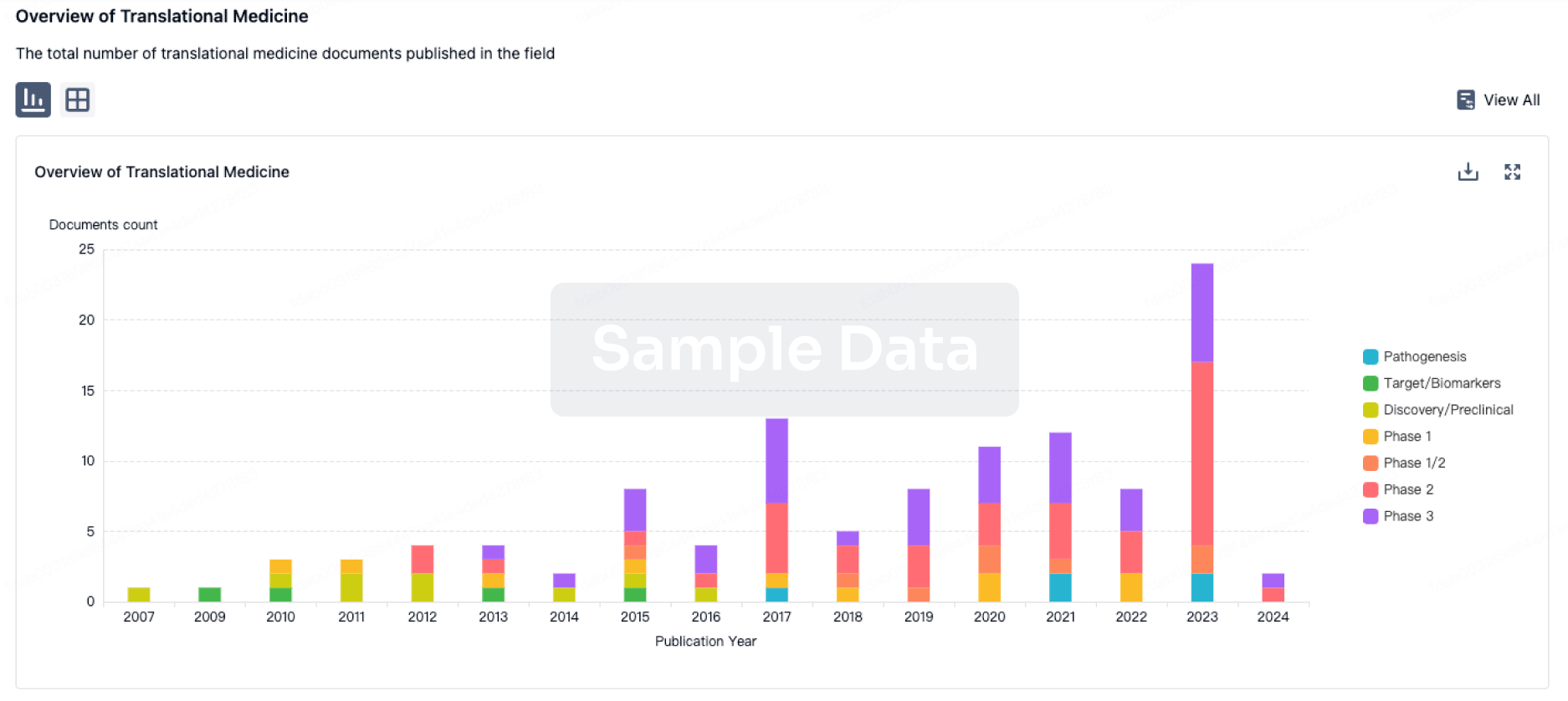
Deal
Boost your decision using our deal data.
login
or
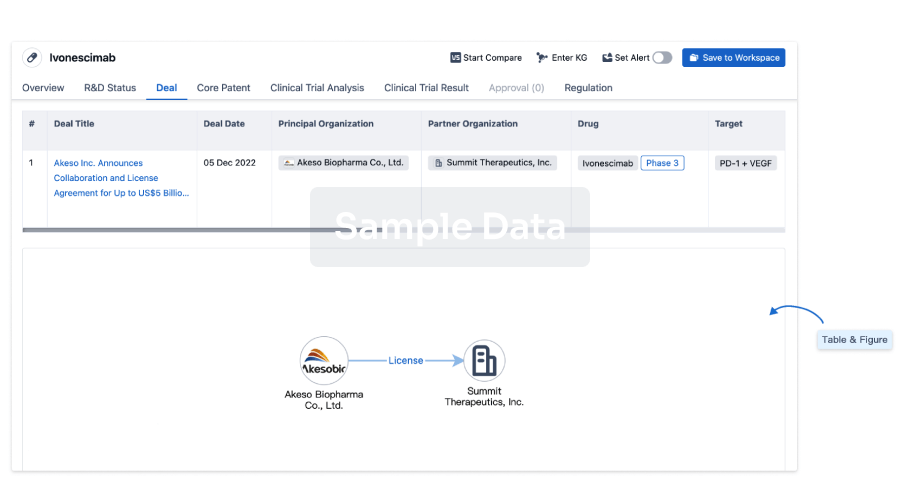
Core Patent
Boost your research with our Core Patent data.
login
or
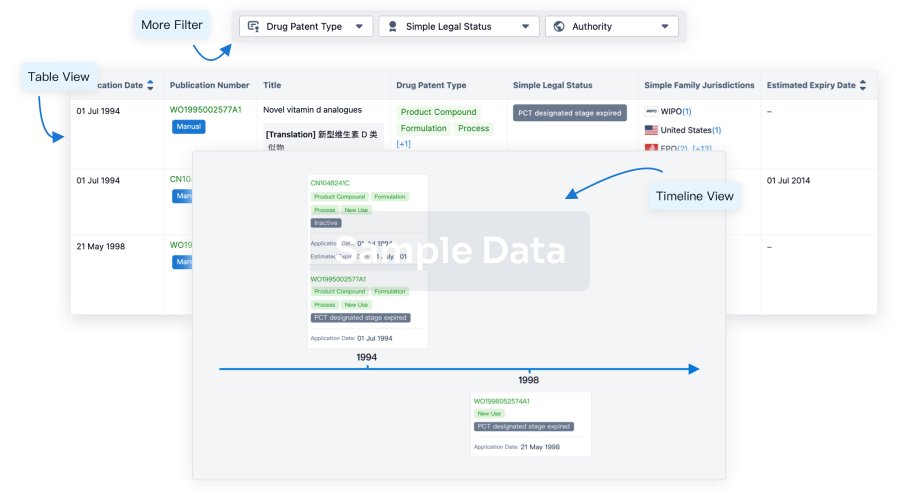
Clinical Trial
Identify the latest clinical trials across global registries.
login
or
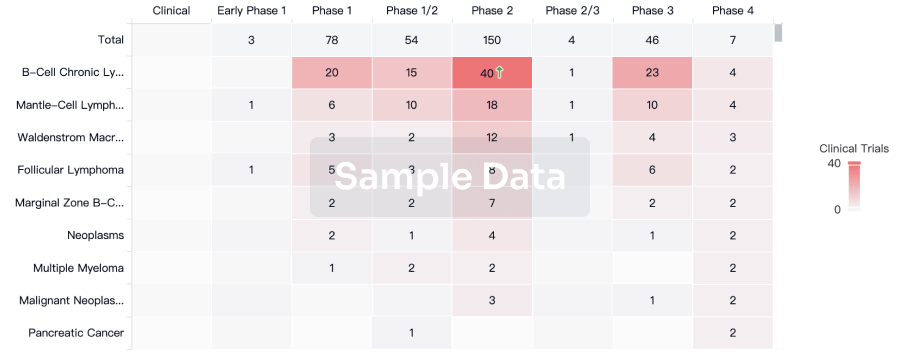
Approval
Accelerate your research with the latest regulatory approval information.
login
or
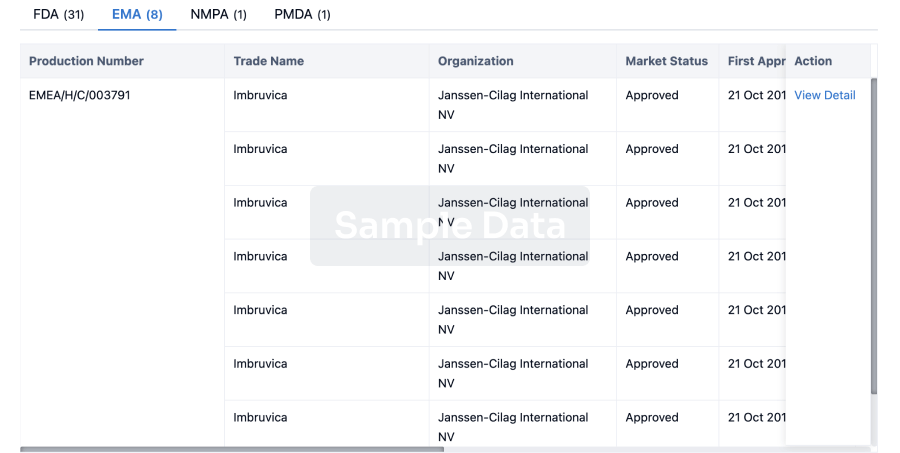
Regulation
Understand key drug designations in just a few clicks with Synapse.
login
or

AI Agents Built for Biopharma Breakthroughs
Accelerate discovery. Empower decisions. Transform outcomes.
Get started for free today!
Accelerate Strategic R&D decision making with Synapse, PatSnap’s AI-powered Connected Innovation Intelligence Platform Built for Life Sciences Professionals.
Start your data trial now!
Synapse data is also accessible to external entities via APIs or data packages. Empower better decisions with the latest in pharmaceutical intelligence.
Bio
Bio Sequences Search & Analysis
Sign up for free
Chemical
Chemical Structures Search & Analysis
Sign up for free



